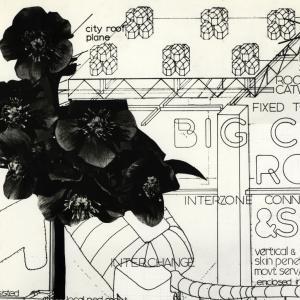AA Research Clusters are year-long special projects, activities and events that bring together diverse groups of AA staff, students and outside partners – audiences, specialists, researchers – to realise a body of focused research. Originally conceived in 2005, Research Clusters are mechanisms for triggering new territories and modes of research. The clusters are intended to promote and cultivate the culture of applied research in the school.
Each year the AA Research Cluster Group, in consultation with existing cluster curators, takes applications from across the school for a new cycle of research areas; there are usually four clusters operating at any one time. In addition to developing expertise and specific projects, Research Clusters seek to challenge existing forms of research and presentation – exploring alternative ways in which work can be produced. These might include events, symposia, conferences, workshops, performances, publications off- or on-site exhibitions, fabrications and interdisciplinary collaborative research and competitions.
Architectural Doppelgangers
Cluster Curators: Ines Weizman and Sam Jacob
The research cluster Architectural Doppelgängers aims to explore architecture’s relationship to the multivalent meanings and implications of copying. Subject to law the idea of the copy also brings profound moral disturbance to our idea of architecture. Though the profession increasingly relies on technologies of copy, duplication and replication, the idea of originality remains a disciplinary foundation. Does the myth of the doppelgänger haunt the discipline? Is architecture’s imminent death signalled by the encounter of its doppelgänger? Does its doubling create an evil twin? Or conversely, might architecture find a productive relationship with the culture of the copy? Originating with a sequence of public interviews, small symposia and talks that examine a variety of intellectual products and properties, the cluster explores two main questions: one concerns the nature of the copy, the other the problem of copyright.
Copy
In a comprehensive atlas of practices and forms, architecture doppelgängers will archive obscure cases of architectural curiosity, categorised and investigated in its myriad forms of duplication, doubling, faking, pirating and re-enactment. Interestingly, any research about a doppelgänger always requires an intense study of the original. The question about the value and meaning of the authentic work of architecture as well as the technological possibilities for reproduction poses challenging questions for historians, architects, students and legal experts alike.
Copyright
On the basis of such an extensive atlas of ‘architecture doppelgängers’ we will investigate scientific and legal methods to assess the meaning and also the potentially unsavoury dealings with architectural doubles. Also, this part of the research possibly offers a more unconventional way to explore architecture between legality and illegality. It concerns the rights to architecture, that is, the meaning of the legal owner of the copyright as a private property, but also aims to think through a legal definition of ownership about architecture as a ‘public commons’.





















































